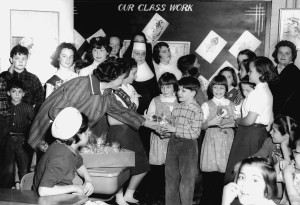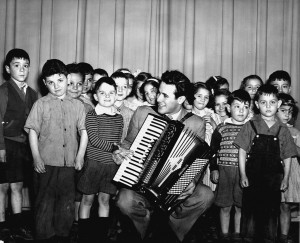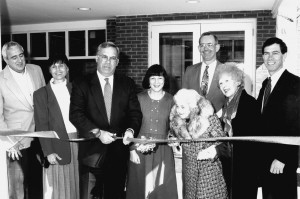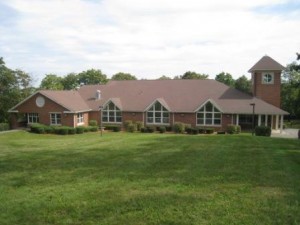Early days (1918 – 1920)
As it ravaged the world, the influenza epidemic of 1918 devastated Boston's congested North End, leaving hundreds of orphans in its wake. Shaken by this tragic crisis, Father Antonio Sousa, O.F.M., pastor of St. Leonard's Church (the first Italian parish in New England, established in 1875) took the cause to heart, and set about to mobilize the Italian community. The orphaned children of the North End became the subject of Sousa's sermons and numerous letters sent to other Italian Roman Catholic Churches in the Boston Archdiocese.
In 1919, A group of 42 Italian-Americans gathered at St. Anthony's Hall adjacent to St. Leonard's to organize and select a Board of Directors and Incorporators to create the Home for Italian Children in Massachusetts. In the spring of 1920, an aggressive fundraising campaign enabled the purchase of the Gahm Estate in Jamaica Plain, a 10-acre farm with farmhouse and barn. Cardinal O'Connell arranged for Sister Mary Valentina, a Missionary Franciscan Sister of the Immaculate Conception and teacher at St. Anthony's school in the North End, to operate the Home for Italian Children with six members of her order.
On February 10, 1921, the Home for Italian Children officially opened with 30 girls aged 4-14 in residence. Admission was broadened to include boys in 1929.
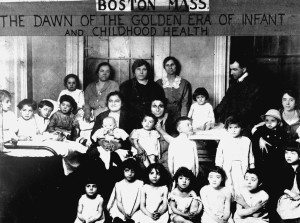
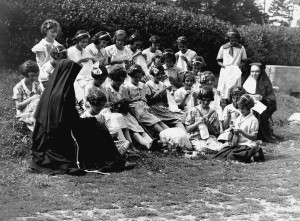
1921-1968
During this time, the Home cared for approximately 115 children annually. The average age was 10 and the average stay was one year, although some young people resided for up to 10 years. Unlike most other orphanages and child welfare agencies of the time, children were not placed with foster or adoptive families, as domestic servants (which was not the custom for Italians,) or transferred to other institutions. Rather, most of the children at the Home simply remained until they could return to their parents or relatives or until an older sibling could care for them.
At its beginning, the Home's founders had the foresight to also concern themselves with "other children of Italian parentage, whose parents are unable for any cause to support them properly." The Home therefore was founded on by-laws that gave it a continuing mission to serve children long after the aftermath of the influenza epidemic. Over the years, the Home changed the nature of its services, from Italian children to children of all races, nationalities and religions, and from custodial care to treatment.
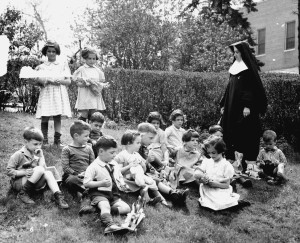
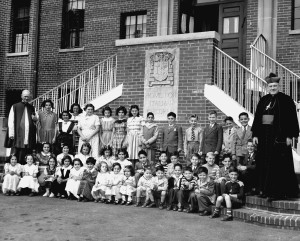
1968 – 1979
In the late 1960’s, children with behavioral and family problems, many of them victims of abuse or neglect, were also accepted. The professional services of a social worker, consulting psychologist, and teachers were added to supplement the work of the Sisters in providing services to the children. It was then that the Home officially separated from the Catholic Church.
In response to the changing political and social climate, the Home's name was changed. Keeping its ties to its heritage and the Italian community, the agency became the Italian Home for Children (IHC.) By the mid-1970's, IHC had become a residential treatment center providing clinical services for emotionally challenged children of all nationalities and races.
1979 - 2000
A full range of clinical and educational services was developed. The main building was renovated to create modern, cottage-style units and additional meeting space. In 1985, IHC added an emergency shelter program for immediate care for children at risk. In 1990 The Mary Savioli Pallotta Educational Center was built to provide specialized education to our residents and students from the wider community.
2000’s
The Italian Home for Children acquired Cranwood Group Home in East Freetown, MA to expand its residential services with two group homes located in a bucolic setting. In 2001, in a joint venture with the Walker Home and School, IHC acquired the Brighton Allston Mental Health Association (BAMHA) to complete its continuum of services, by providing community-based outpatient therapy services.
In 2003, IHC was awarded a contract by the state of Massachusetts to provide clinical after school and camp programs designed to help children who face social, emotional, and/or academic problems learn positive and constructive behaviors.
In 2007, IHC opened a Community Based Acute Treatment program designed to help children who were in need of hospitalization successfully return home, and to provide an initial hospital diversion when possible. In 2009, IHC began providing In-Home Therapy and Therapeutic Mentoring as part of the Massachusetts’ Children’s Behavioral Health Initiative (CBHI.) These services involve a team of professionals providing community based work to help children and families through crises and challenges.
In 2017, IHC expanded our CBHI programming by providing In-Home Behavioral Therapy. These services also involve a team of professionals, but in this case the focus is on alleviating problem behaviors and helping children learn more constructive and healthy ways of responding to stress.
Present Day
IHC’s continuum of care includes mental health services, various in-home therapies, therapeutic mentoring, an afterschool program, vacation and summer camps, a therapeutic day school, intensive group homes, acute residential treatment services, and a spiritual enrichment program. The continuum allows us to serve children of all ages and their families.
Future Directions
In addition to continuing to increase the size and reach of current programs, IHC is embarking on a plan to develop services specifically designed for children with autism. IHC is committed to working with the state of Massachusetts and private funders to design and implement services designed to support families in crisis and reduce the need for out-of-home placement and hospitalization.

